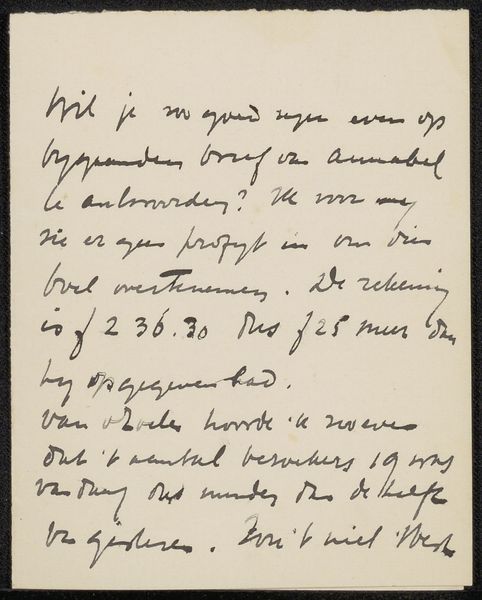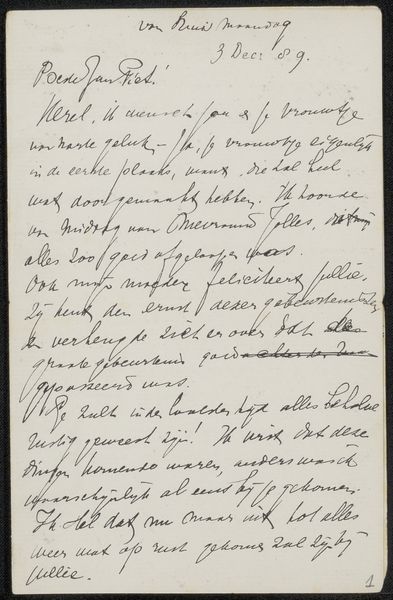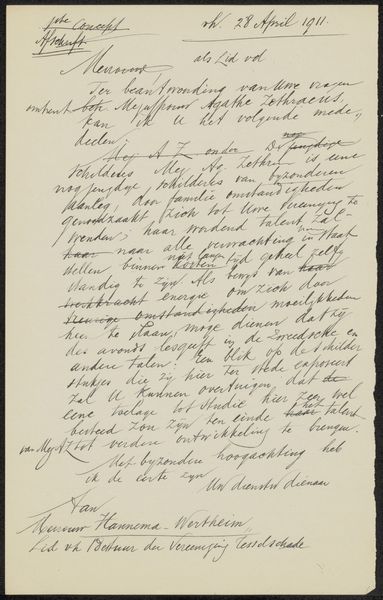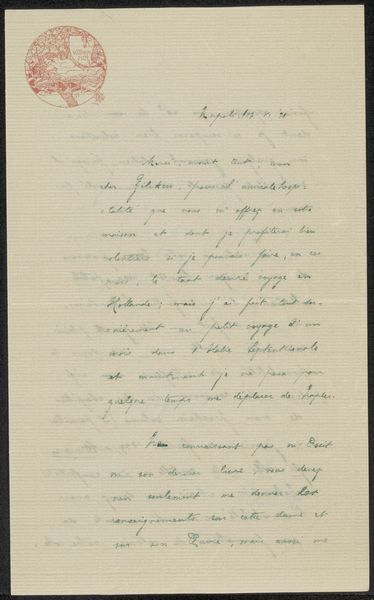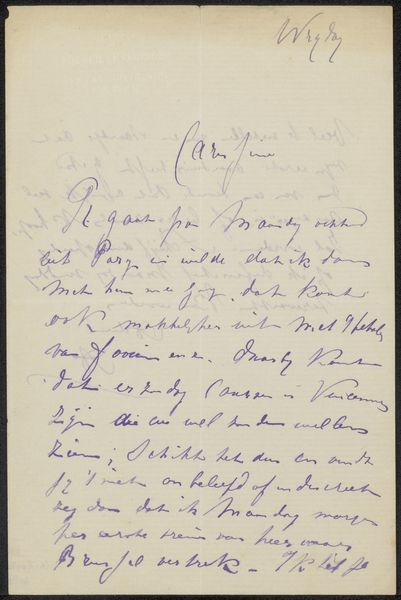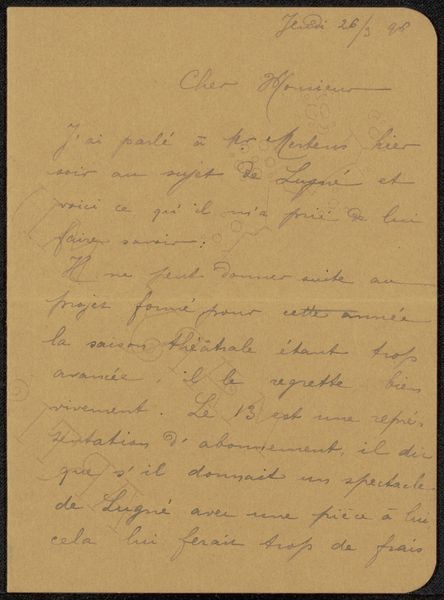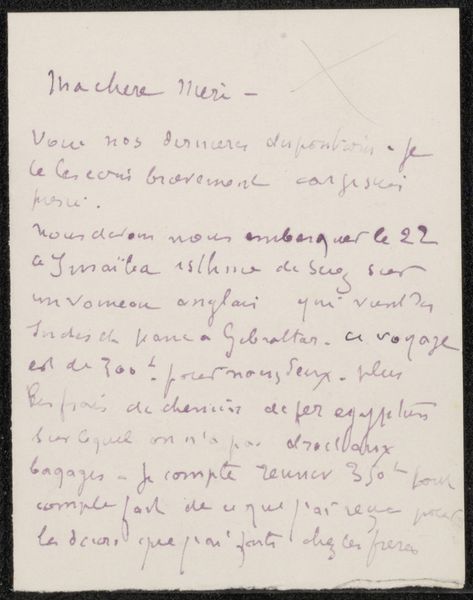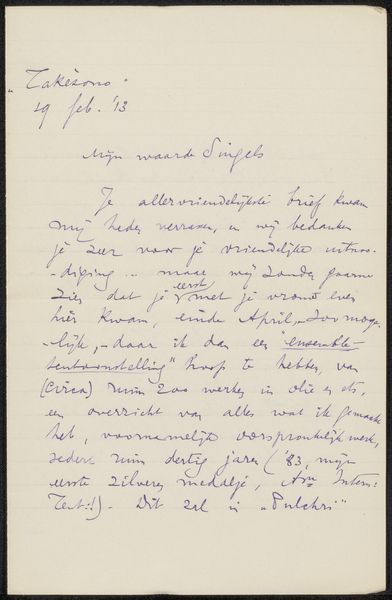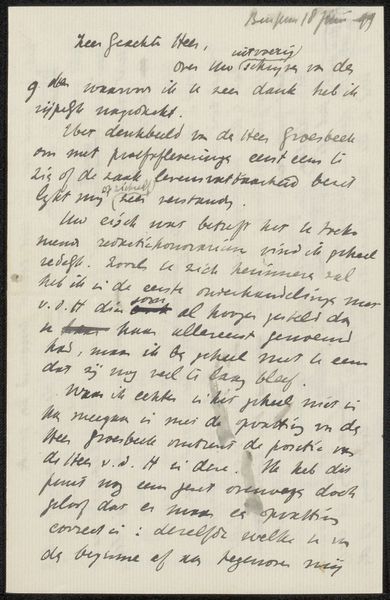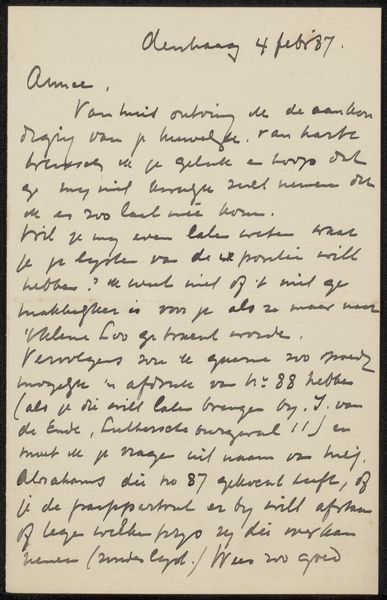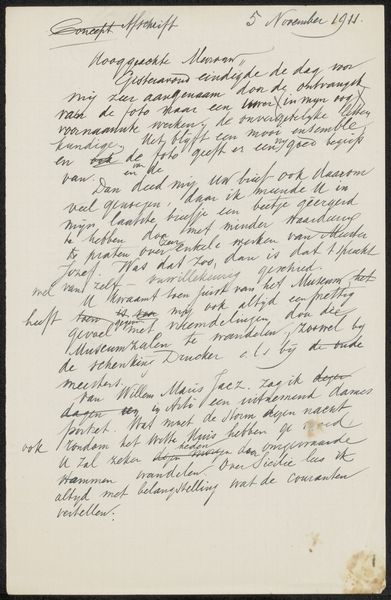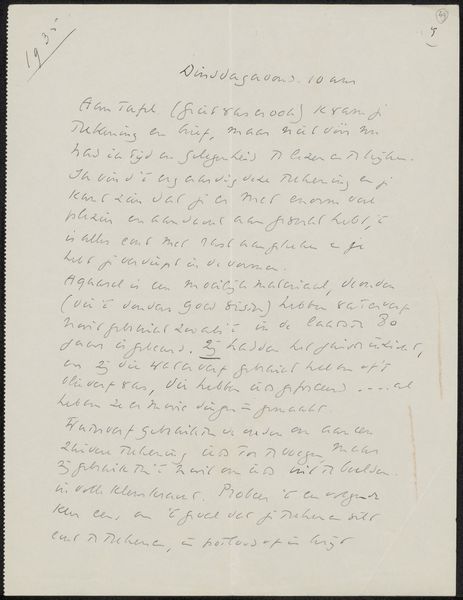
Tekst getiteld 'Sahara-Indrukken' voor Democratisch-Staatkundig en Algemeen Weekblad De Wereld 1867 - 1930
0:00
0:00
philipzilcken
Rijksmuseum
drawing, paper, ink, pen
#
drawing
#
hand-lettering
#
dutch-golden-age
#
pen sketch
#
hand drawn type
#
hand lettering
#
paper
#
personal sketchbook
#
ink
#
ink drawing experimentation
#
pen-ink sketch
#
pen work
#
sketchbook drawing
#
pen
#
sketchbook art
#
calligraphy
Copyright: Rijks Museum: Open Domain
Curator: This piece, dating between 1867 and 1930, is entitled "Tekst getiteld 'Sahara-Indrukken' voor Democratisch-Staatkundig en Algemeen Weekblad De Wereld." It’s a drawing currently held at the Rijksmuseum. What strikes you initially about it? Editor: It feels intensely personal, like stumbling across a page ripped straight from someone's private journal. The density of the handwriting creates an impression of someone rapidly capturing their thoughts. Curator: Precisely. This drawing is attributed to Philip Zilcken and appears to be a draft text – perhaps for a publication in *De Wereld,* a Dutch weekly magazine – detailing "Sahara Impressions." We can view it as a reflection of Dutch colonial interests and perceptions of North Africa during that period. Editor: Right, seeing this as a potential draft shifts my understanding. The handwriting, now, feels more like an assertion of control over the narrative. Consider, also, the power dynamics at play here. The author’s observations are likely influenced by orientalist views, which reinforces existing power imbalances. What details does he focus on, and what does he omit, especially considering the magazine it's meant for? Curator: Well, the text references encounters with local figures, mentioning an Arab leader and descriptions of social customs such as drinking coffee and smoking cigarettes. He also writes of mosques and the spiritual character of the people. Understanding the historical moment—the height of European colonialism—it would have perpetuated certain cultural stereotypes for a Dutch readership. Editor: Exactly. How did he represent Arab individuals and communities to that specific Dutch audience, and to what end? It becomes vital to dissect the language he uses, acknowledging that this isn't an innocent observation, but one infused with the gaze of privilege. I want to consider this text not just as a descriptive document but as a political artifact, shaping public understanding of the “Other.” Curator: It encourages us to critically analyze such materials within the broader colonial context. It is vital we analyze them with sensitivity and precision. Editor: I agree. Every scratch of the pen, a conscious decision to include some details and discard others, actively participates in constructing meaning and impacting societal perceptions of the cultures that he observes. Thank you, that was extremely interesting!
Comments
No comments
Be the first to comment and join the conversation on the ultimate creative platform.

